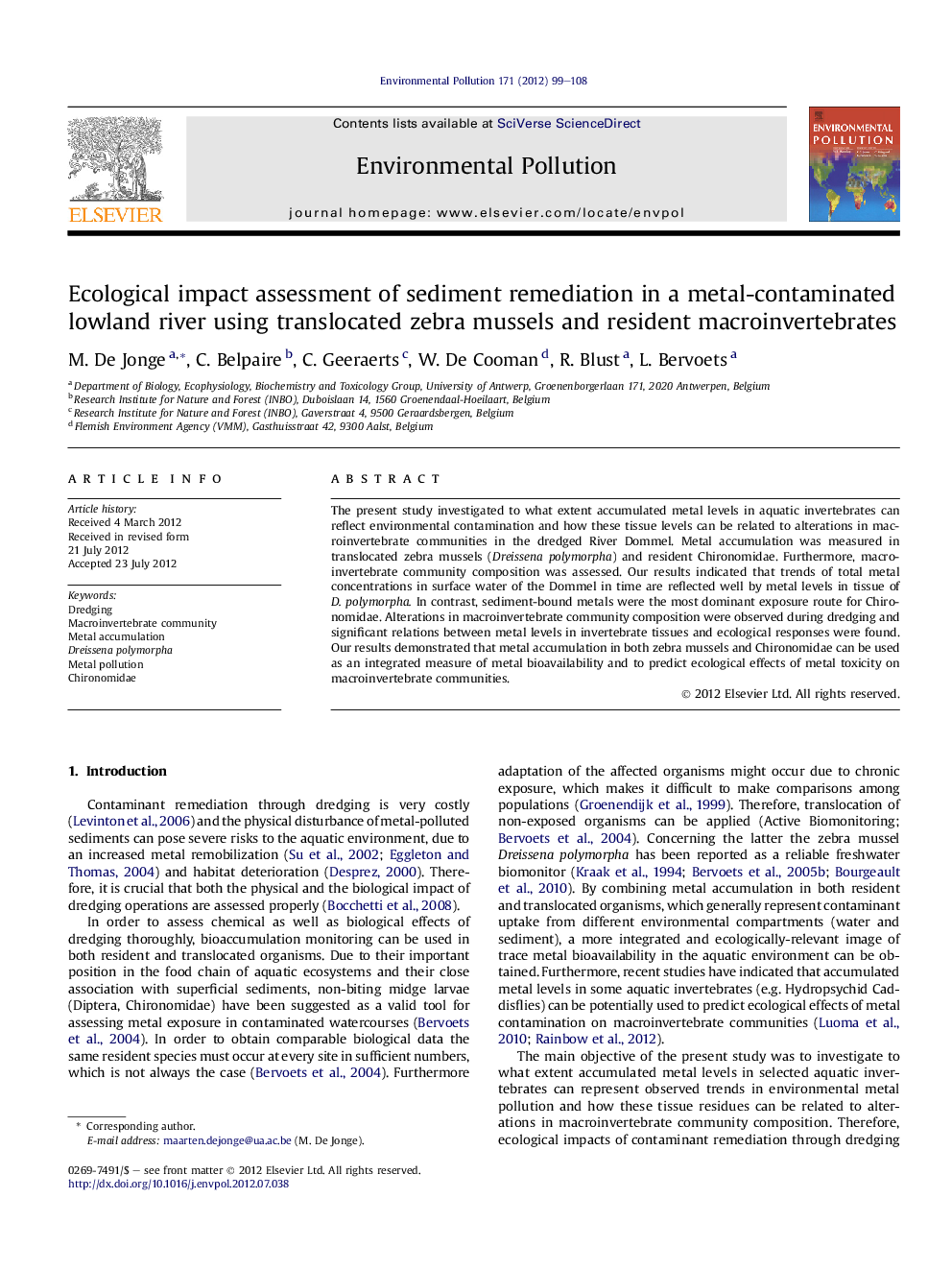| Article ID | Journal | Published Year | Pages | File Type |
|---|---|---|---|---|
| 4424650 | Environmental Pollution | 2012 | 10 Pages |
The present study investigated to what extent accumulated metal levels in aquatic invertebrates can reflect environmental contamination and how these tissue levels can be related to alterations in macroinvertebrate communities in the dredged River Dommel. Metal accumulation was measured in translocated zebra mussels (Dreissena polymorpha) and resident Chironomidae. Furthermore, macroinvertebrate community composition was assessed. Our results indicated that trends of total metal concentrations in surface water of the Dommel in time are reflected well by metal levels in tissue of D. polymorpha. In contrast, sediment-bound metals were the most dominant exposure route for Chironomidae. Alterations in macroinvertebrate community composition were observed during dredging and significant relations between metal levels in invertebrate tissues and ecological responses were found. Our results demonstrated that metal accumulation in both zebra mussels and Chironomidae can be used as an integrated measure of metal bioavailability and to predict ecological effects of metal toxicity on macroinvertebrate communities.
► The use of tissue concentrations to assess environmental metal pollution was studied. ► Metal accumulation was measured in caged zebra mussels and resident Chironomidae. ► Shell condition of mussels and macroinvertebrate taxa distribution was assessed. ► Different accumulation between biota and relations with community level were found. ► Bioaccumulation is an integrated measure of metal toxicity in aquatic communities.
